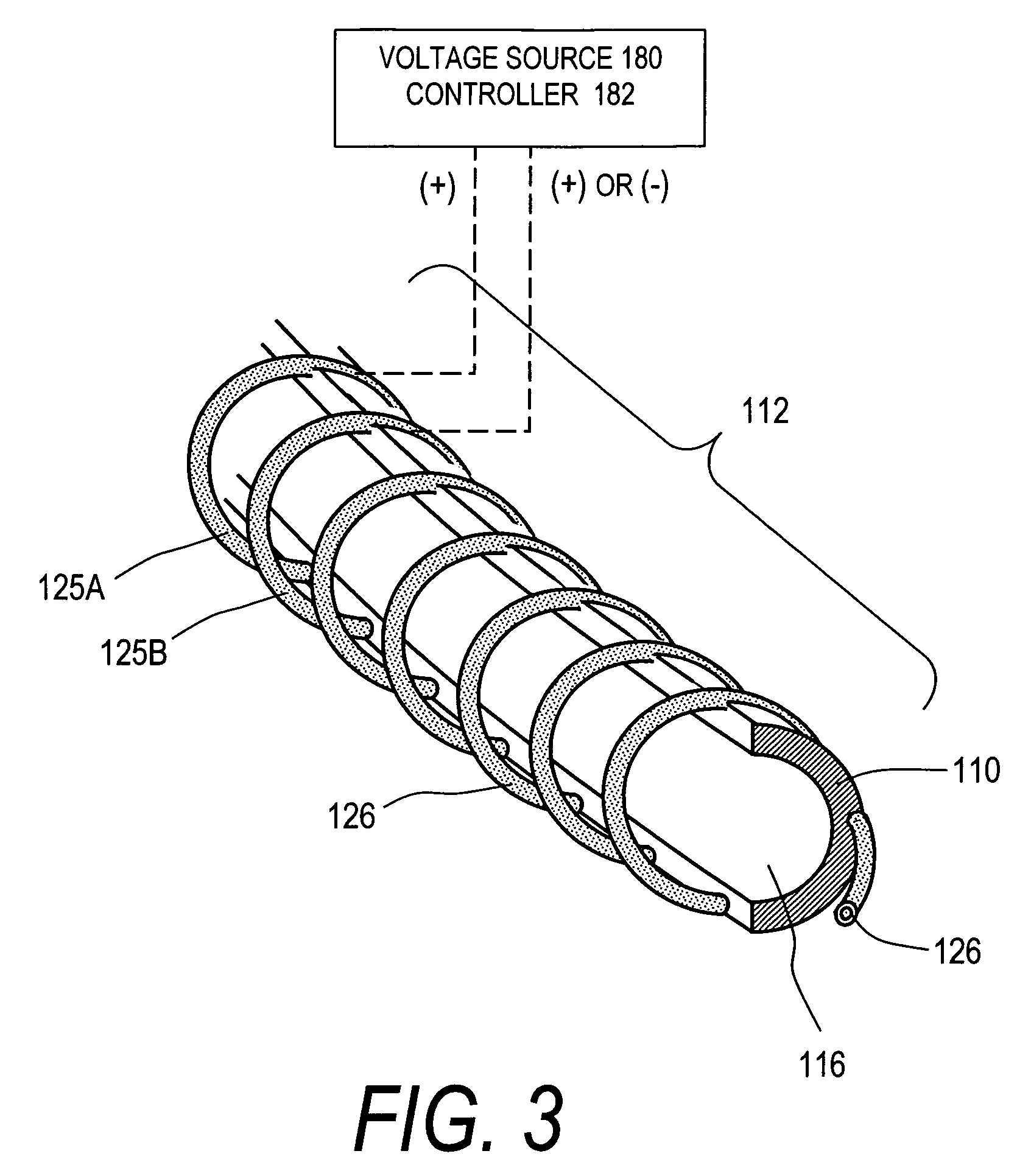Electrosurgical instrument and method
a technology of electrosurgical instruments and methods, applied in the field of endovascular surgery, can solve the problems of multiple spider veins, purple discoloration, blood flowing back down into the leg in the wrong direction, etc., and achieve the effect of reducing conductance, increasing resistance, and low base resistan
- Summary
- Abstract
- Description
- Claims
- Application Information
AI Technical Summary
Benefits of technology
Problems solved by technology
Method used
Image
Examples
Embodiment Construction
[0013]1. Catheter sleeve including PTCR electrosurgical surface for treating varicose veins. FIGS. 1 and 2 illustrate the distal working end 102 of a Type “A” elongated catheter that includes a distal region that includes a distal sleeve end 110 that comprises an electrosurgical surface 112 corresponding to the invention that is adapted for controllably applying energy to the lumen of a blood vessel or other tubular body structure. The sleeve 110 can be any suitable length along axis 115 for endoluminal navigation to a targeted site. The cross-section of the sleeve can be a suitable dimension, for example, 4 French with a 2 French lumen indicated at 116. The lumen 116 is dimensioned to slide over a guidewire 120 with the guidewire capable of acting as a substantially rigid member to straighten the sleeve 110 to allow endoluminal navigation.
[0014]In the exemplary embodiment of FIGS. 1 and 2, it can be seen that sleeve 110 has a first untensioned condition in FIG. 2 that has an expand...
PUM
| Property | Measurement | Unit |
|---|---|---|
| thickness | aaaaa | aaaaa |
| temperature coefficient of resistance | aaaaa | aaaaa |
| flexible | aaaaa | aaaaa |
Abstract
Description
Claims
Application Information
 Login to View More
Login to View More - R&D
- Intellectual Property
- Life Sciences
- Materials
- Tech Scout
- Unparalleled Data Quality
- Higher Quality Content
- 60% Fewer Hallucinations
Browse by: Latest US Patents, China's latest patents, Technical Efficacy Thesaurus, Application Domain, Technology Topic, Popular Technical Reports.
© 2025 PatSnap. All rights reserved.Legal|Privacy policy|Modern Slavery Act Transparency Statement|Sitemap|About US| Contact US: help@patsnap.com



